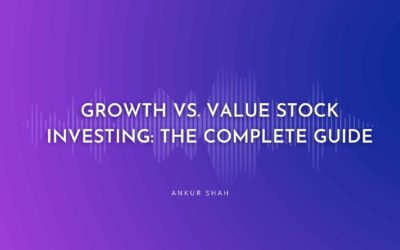Definition of intrinsic value
What is the intrinsic value of a stock and why does it matter? Intrinsic value refers to the true underlying value of a stock based on fundamental analysis of the company’s assets, earnings, and other financial metrics.
Calculating a stock’s intrinsic value is crucial for investors – it allows you to determine whether a stock is overvalued or undervalued compared to its actual worth. If the market price of a stock is lower than its intrinsic value, it may be an attractive investment opportunity.
There are several main methods investors can use to estimate intrinsic value:
Discounted cash flow (DCF) analysis projects future cash flows and discounts them back to the present value
Dividend discount models value stocks based on their future dividend payments
Price multiple analysis uses ratios like P/E to compare value across similar stocks
Asset-based models add up tangible assets to get at a company’s net value
In this comprehensive guide, we will explore each of these intrinsic value calculation methods in detail, including their formulas, pros and cons, and real-world examples. Calculating intrinsic value takes practice, but it is one of the most fundamental investing skills for value investors.
Discounted Cash Flow (DCF) Models
Discounted cash flow (DCF) analysis is one of the most common methods used to calculate a stock’s intrinsic value. The key idea behind DCF models is that the intrinsic value of a stock is equal to the present value of its future cash flows.
In DCF analysis, analysts project the company’s free cash flows over a period of several years into the future. Free cash flows represent the cash the company generates after accounting for capital expenditures needed to maintain/grow the business.
These projected future cash flows are then discounted back to the present day at an appropriate discount rate, usually the company’s weighted average cost of capital (WACC). This accounts for the time value of money – money in the future is worth less than money today.
The basic DCF formula is:
Intrinsic Value = ∑ CFt / (1+r)^t
Where:
CFt = Free cash flow in year t
r = Discount rate
The sum of all the discounted cash flows gives the net present value – the intrinsic value. If the stock price is lower than this intrinsic value, it may be undervalued.
Pros:
Directly values business based on cash flow generation ability
Allows modeling different growth scenarios
Cons:
Requires making estimates of future cash flows
Very sensitive to discount rate and growth assumptions
Dividend Discount Models
Dividend discount models are a variant of DCF models specifically designed for valuing stocks based on their future dividend payments. The premise is that the intrinsic value of a stock is equal to the present value of its future dividends.
The most common dividend discount model is the Gordon Growth Model:
Value = D1 / (r – g)
Where:
D1 = next year’s dividend
r = discount rate
g = dividend growth rate
This simple formula values a stock based on next year’s dividend, an assumed constant dividend growth rate, and a discount rate. Other more complex dividend models allow varying growth rates.
Pros:
Directly uses dividend payouts, a core aspect of stock value
Easy to model for stocks with stable dividends
Cons:
Not applicable for non-dividend paying stocks
Hard to estimate dividend growth rates accurately
Price Multiple Models
Price multiple analysis uses financial ratios to value stocks based on comparisons with similar companies. Ratios like the price-to-earnings (P/E) ratio can be used to estimate intrinsic value
The formula is straightforward:
Intrinsic Value = Multiple x Earnings
For example, if similar stocks in an industry trade at an average P/E of 20x, and the stock you are analyzing has $2 in earnings per share, the estimated intrinsic value would be:
20 x $2 = $40
The key is selecting appropriate peer companies and multiples suitable for the stock you are valuing. Common multiples include P/E, P/B, P/S, and EV/EBITDA.
Pros:
Simple and quick relative valuation approach
Uses real market data based on peer valuations
Cons:
Hard to find perfect peer comparables
No insight into company’s actual cash flows
Asset-Based Models
Asset-based models calculate a company’s intrinsic value by estimating the current fair market value of its assets. This is done by adding up all tangible assets reported on the balance sheet, such as:
Cash, accounts receivable, inventory
Property, plant, and equipment
Investments and other financial assets
And subtracting all liabilities:
Accounts payable, debt
Other short and long term liabilities
The net asset value represents the equity value of the business. This can be divided by shares outstanding to get intrinsic value per share.
The formula is:
Intrinsic Value = (Assets – Liabilities) / Shares Outstanding
Pros:
Simple summation of tangible asset values
Uses balance sheet data to estimate company’s net worth
Cons:
Ignores future cash flow potential
Book values may not equal current market value
Other Valuation Methods
While discounted cash flow and dividend models are most common, there are some other intrinsic valuation methods investors can use:
Economic Value Added (EVA) – Calculates intrinsic value based on a company’s economic profit after accounting for its cost of capital. Factors in balance sheet data.
EVA Formula:
NPV = Invested Capital x (ROIC – WACC)
Residual Income – Similar to DCF models but uses residual income as the valuation metric instead of free cash flow. Residual income is net income minus a charge for using investors’ capital (cost of equity x book value).
Residual Income Formula:
Value = Book Value + ∑ Residual Income / (1+r)^t
Exit Multiple – Values a business based on an estimated future exit value or sale price. Useful for early stage companies without much current cash flow.
Pros/Cons of these methods:
Provide additional angles on valuation
<!—->
Tend to be more complex and involve more estimates
Not as widely used or accepted as DCF/DDM
Comparing Valuation Methods
There is no one-size-fits-all approach to picking the right valuation method for a stock. Investors should consider:
Company characteristics – Stable blue chips suit dividend discount models best. High-growth tech companies are better valued through DCF.
Industry practices – Use standard models investors are accustomed to for an industry. Most sectors have conventional methods.
Data availability – Match the model to available data. DCF needs cash flow forecasts. Multiples need peers.
Investor skill level – Simpler models like peer multiples are accessible to most. Complex DCFs require finance skills.
Since all models rely on estimates and assumptions, using multiple valuation methods provides a range of values to triangulate the true intrinsic value. Weight the model you have most confidence in, but leverage multiple models to get a balanced perspective.
Estimating Inputs and Assumptions
Valuation models are only as good as their inputs. Investors should put thought into estimating key assumptions like:
Cash flows – Base projections on historical growth, margins, new products, cost structure, capex needs, etc.
Growth rates – Consider past growth, market size, competition, barriers to entry, company advantages.
Discount rates – Calculate WACC based on cost of equity, cost of debt, and optimal capital structure.
Multiples – Use averages of comparable peers in the same industry and geography.
It’s also important to perform sensitivity analysis to see how intrinsic value changes as key assumptions vary within reasonable ranges. This provides a level of comfort that even if estimate sare not perfect, the valuation conclusion is still valid.
Examples and Case Studies
Let’s walk through an example DCF model to calculate intrinsic value:
Company XYZ has free cash flow of $50 million growing at 6% per year
Project cash flows for 5 years and discount by 12% WACC
Calculate terminal value in year 5 by valuing last year’s cash flow at a 4% growth rate
Year 1: $50 million x (1.06) = $53 million
Year 2: $53 million x (1.06) = $56.18 million
Year 3: $56.18 million x (1.06) = $59.54 million
Year 4: $59.54 million x (1.06) = $63.12 million
Year 5: $63.12 million x (1.06) = $66.91 million
Discounted cash flows:
Year 1: $53 million / 1.12 = $47.32 million
Year 2: $56.18 million / 1.12^2 = $45.28 million
Year 3: $59.54 million / 1.12^3 = $43.42 million
Year 4: $63.12 million / 1.12^4 = $41.72 million
Year 5: $66.91 million / 1.12^5 = $40.16 million
Terminal value: $66.91 million x (1.04 / 0.12 – 0.04) = $557.58 million
Discounted terminal value = $557.58 million / 1.12^5 = $336.62 million
Total discounted cash flows = $47.32 + $45.28 + $43.42 + $41.72 + $40.16 + $336.62 = $554.52 million
With 10 million shares outstanding, the intrinsic value per share = $55.45
This can be compared to the market price to determine if XYZ is under/overvalued.
Conclusion
Calculating intrinsic value is fundamental to value investing. While no model is perfect, DCF and dividend discount models are the most trusted and utilized in practice. Simpler multiples and asset-based methods can provide supporting perspectives.
Focus on cash flow and using rigorous assumptions. Leverage multiples like P/E for quick checks. Use sensitivity analysis to stress test your inputs. Weight the model you have most confidence in for your final valuation.
Getting intrinsic value right takes practice and comparing to real market prices. But it provides the core skill of being able to value companies based on their business fundamentals and cash generation potential.




